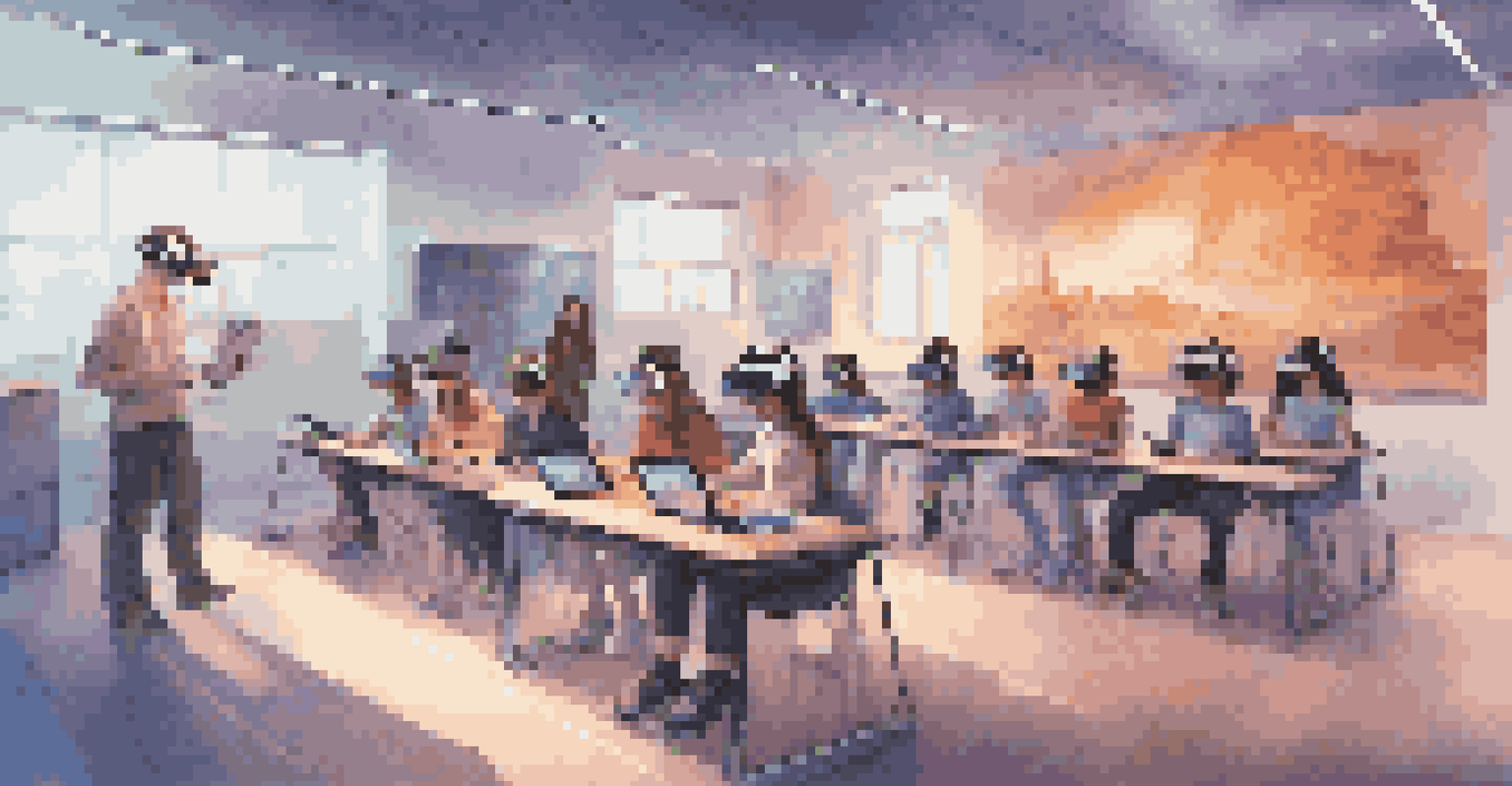The Integration of IoT in Educational Institutions for Better Learning

Understanding IoT and Its Role in Education
The Internet of Things (IoT) refers to the network of interconnected devices that communicate and share data. In education, this means everything from smart classrooms to wearable devices that monitor student engagement and performance. By integrating IoT technology, educational institutions can create a more dynamic and responsive learning environment.
The IoT is not just a technology; it’s a revolution in how we connect, communicate, and collaborate in education.
Imagine a classroom where the lights adjust automatically based on the number of students present or where resources are allocated based on real-time data about student needs. This connectivity opens up new avenues for personalized learning, allowing educators to tailor their approach to individual students more effectively.
Moreover, IoT tools can facilitate communication between students, teachers, and parents, creating a more collaborative educational experience. By understanding how IoT works, educators can harness its potential to improve learning outcomes and operational efficiency.
Enhanced Learning Environments with IoT Technology
IoT technology enables the creation of smart classrooms that enhance the learning experience. For example, smart boards can display interactive content, allowing students to engage with materials in a more hands-on way. This not only keeps students interested but also caters to various learning styles, whether visual, auditory, or kinesthetic.

Additionally, IoT devices can help in managing classroom environments. Climate control systems can adjust heating or cooling based on occupancy, ensuring a comfortable atmosphere conducive to learning. Such enhancements can lead to improved concentration and productivity among students.
IoT Enhances Learning Environments
Integrating IoT technology transforms classrooms into interactive and responsive learning spaces, catering to diverse student needs.
By fostering a more engaging and responsive learning environment, educational institutions can better prepare students for a technology-driven world, ultimately bridging the gap between traditional education and modern demands.
Personalized Learning Through Data Analytics
One of the most significant advantages of integrating IoT in education is the ability to gather and analyze data effectively. With IoT devices, educators can track student performance in real time, identifying areas where they may struggle. This data-driven approach allows for personalized learning experiences tailored to individual student needs.
Data is the new oil, and in education, it fuels personalized learning and enhances student engagement.
For instance, if an IoT-enabled assessment tool indicates that a student is having difficulty with a particular math concept, teachers can intervene with targeted resources or support. This proactive approach helps students stay on track and reduces the risk of falling behind.
Ultimately, leveraging data analytics through IoT not only enhances the learning experience but also empowers educators to make informed decisions, fostering a culture of continuous improvement within educational institutions.
Improving Student Engagement via IoT Devices
Engagement is crucial in education, and IoT devices can significantly boost student participation in the learning process. For example, wearables like smartwatches can monitor student activity and engagement levels during classes, providing teachers with insights into when students may need additional motivation.
Moreover, gamified learning applications powered by IoT can turn lessons into interactive experiences. Students can earn rewards for completing challenges or collaborating with peers, making learning feel less like a chore and more like an adventure.
Personalized Learning Through Data
IoT enables real-time data analysis, allowing educators to tailor personalized learning experiences based on individual student performance.
By creating a more engaging learning atmosphere, institutions can foster a love for learning that extends beyond the classroom, encouraging students to explore and discover new concepts eagerly.
Streamlining Administrative Processes with IoT
Beyond enhancing the learning experience, IoT can also streamline administrative processes in educational institutions. For instance, smart attendance systems can automatically record student attendance, reducing the time teachers spend on administrative tasks and allowing them to focus more on teaching.
IoT technology can also help in resource management, such as optimizing the use of classrooms and other facilities. By analyzing data on occupancy and usage patterns, schools can make informed decisions about scheduling and resource allocation.
This efficiency not only saves time but also reduces operational costs, enabling institutions to allocate more resources toward enhancing educational programs and student support services.
Challenges of Implementing IoT in Education
While the benefits of IoT in education are clear, there are challenges to consider. One major concern is the security of student data. With so many connected devices, ensuring the privacy and protection of sensitive information is paramount to maintaining trust within the educational environment.
Additionally, the integration of IoT requires significant investment in both hardware and training for educators. Schools must ensure that their staff is equipped to use these technologies effectively and that infrastructure supports seamless connectivity.
Streamlining Administration with IoT
IoT simplifies administrative tasks, such as attendance tracking and resource management, freeing up time for educators to focus on teaching.
Navigating these challenges is essential for successful IoT implementation, as educational institutions strive to innovate while prioritizing the safety and well-being of their students.
The Future of IoT in Education
As technology continues to evolve, the potential for IoT in education is limitless. Emerging trends such as artificial intelligence and machine learning can further enhance the capabilities of IoT devices, providing even deeper insights into student learning patterns and preferences.
The future may see more widespread adoption of virtual reality (VR) and augmented reality (AR) in conjunction with IoT, creating immersive learning experiences that transport students to different environments or scenarios. Imagine studying history by virtually visiting ancient ruins or exploring the human body through interactive simulations.

By embracing these innovations, educational institutions can prepare students for a rapidly changing world, equipping them with the skills and knowledge necessary for future success.